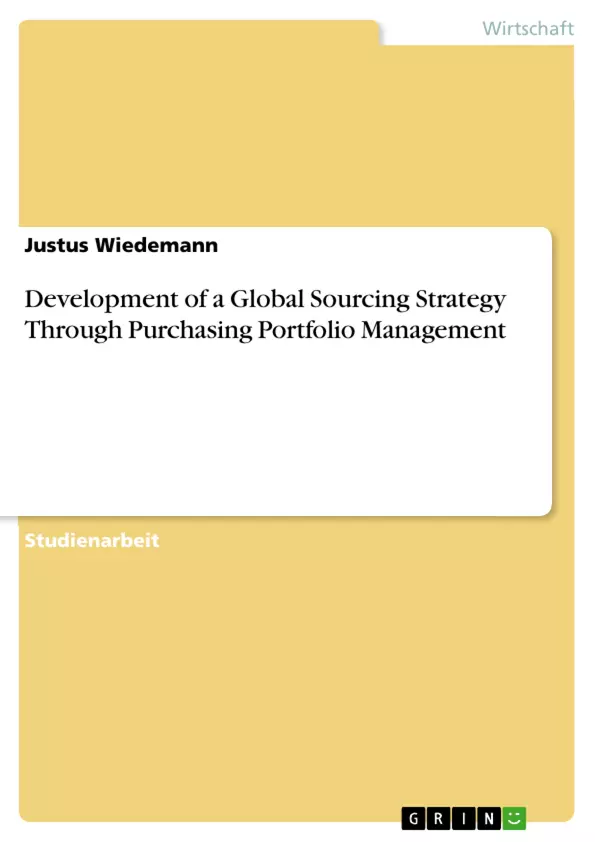Ever since the introduction E-Business solutions in the late 1990´s markets have been evolving to more transparency and immediacy. Having the capability of comparing prices and lead times the global key costumer base also has become more demanding in terms of price, quality and availability.
These changes have been increasing market pressure especially within the trading industry which often adds no or little value to the original product.
The tool, machine, working equipment and service provider, the XYGroup, with its headquarters in Germany offers almost seventy thousand articles; from simple steel grinding tools to high-complexity industry working equipment solutions. The products are mostly delivered from the German headquarters to the subsidiaries. The company has been operating since 1910.
In 2012 Z´s sales aomunted roughly to 100 million €.
One of the 15 subsidiaries within XYis XY CHINA is situated in the directly governed municipality CHINA. The subsidiary was founded in 2002. In 2012 it accounted for 4% of total XYsales.
The location (City in China) was chosen because it provides a mature infrastructure including a harbor and a convenient highway connection to Beijing. In 2012 CHINA has reported Gross Domestic Product per capita of 91,180.6 RMB which was the highest GDP per capita of all Chinese cities. Furthermore CHINA´s real GDP had the highest growth rate of all Chinese cities, 13,8% in 2012. Key accounts are leading automotive as well as aircraft manufacturers. Due to the financial crash in 2008 and its aftermath sales declines in consumer as well as professional markets. Competition within the tool and machine industry has ever since become fierce and the subsidiary struggles with different internal as well as external factors.
One of the indicators for the accentuation of competition within the Chinese market is the subsidiary´s increasingly growing “Outsource Procurement Quota“. This quota states the amount of goods not being ordered from the headquarters in Germany but locally in China or in other countries from external suppliers.
What might be the reason the purchasing managers currently source an increasing number of goods locally or in other countries instead of sourcing from their mother company that states to provide reliable conditions and quality?
Inhaltsverzeichnis
- Introduction
- Purchasing Process at XY CHINA
- Work documentation
- The Lack Of Specification
- Market Challenges
- Porter's Five Forces Applied to XY CHINA
- Further Challenges
- Developed Tool For Enhancing Procurement at XY CHINA
- Adapting Kraljic's Matrix
- Analysis Of The Results
- Possible Savings And Implications
Zielsetzung und Themenschwerpunkte
Die Zielsetzung dieser Arbeit ist die Entwicklung einer effizienten globalen Beschaffungssystematik innerhalb von XY CHINA. Diese Arbeit soll eine wissenschaftliche Grundlage für die Entwicklung eines effizienten Beschaffungssystems liefern.
- Analyse des aktuellen Beschaffungsprozesses bei XY CHINA
- Identifizierung der Herausforderungen im Markt
- Entwicklung einer geeigneten Beschaffungsstrategie
- Anwendung eines maßgeschneiderten Tools auf XY CHINA
- Bewertung der möglichen Einsparpotenziale und Auswirkungen
Zusammenfassung der Kapitel
Kapitel 2 beleuchtet den aktuellen Beschaffungsprozess bei XY CHINA. Kapitel 3 untersucht die Herausforderungen im Markt mit Hilfe einer kurzen Porter's Five Forces Analyse. Kapitel 4 stellt ein maßgeschneidertes Tool vor und wendet es auf XY CHINA an.
Schlüsselwörter
Die Arbeit befasst sich mit den Themen Global Sourcing, Beschaffungsprozess, Porter's Five Forces, Kraljic Matrix, Kostenminimierung, Marktanalyse, und die Herausforderungen im Wettbewerbsumfeld.
- Arbeit zitieren
- Justus Wiedemann (Autor:in), 2013, Development of a Global Sourcing Strategy Through Purchasing Portfolio Management, München, GRIN Verlag, https://www.grin.com/document/267131



